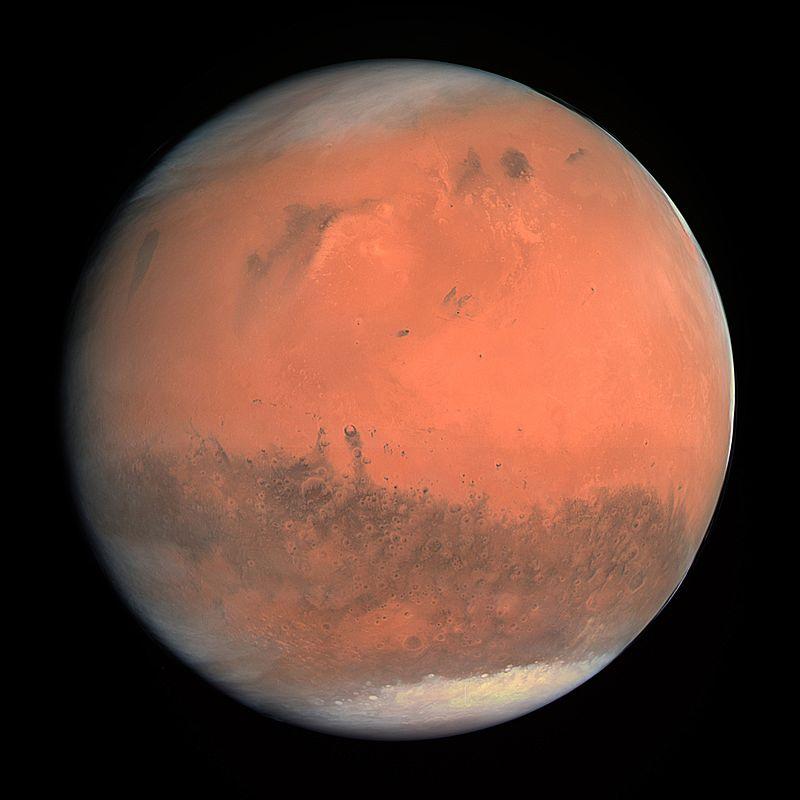
HOUSTON—The concept of planetary protection—the prevention of life forms on other planets from infecting Earth and preventing terrestrial life forms from contaminating other worlds—has a long history.
But its relevance is emerging with a new urgency as NASA prepares to return to the Moon with human explorers in 2024 to prepare them for the first journey to Mars, perhaps in the 2030s.
The already ambitious challenge will fail if explorers return from the red planet with a COVID-19-like disease threat, or if they contaminate Mars with bacteria and viruses that prevent the science community from solving the mystery of whether life exists beyond Earth.
Experts gathered virtually May 19 for the first in a two-day meeting on the topic. It was sponsored by the Committee on Space Research (COSPAR), an international organization established more than six decades ago to nurture space science. They expressed some urgency on two fronts while helping the U.S., other signatories to the 1967 Outer Space Treaty, and the U.N. to prepare for Mars.
As presented by Gerhard Kminek, the European Space Agency’s (ESA) planetary protection officer, they include:
— Establishing a Martian surface meteorological station to gather detailed data on wind speeds and circulation over at least a Martian year.
— Using the International Space Station (ISS) as a confined, low-gravity laboratory setting to assess in depth the microbiome of the facility as well as the astronauts over the long term using such instrumentation is the MinION, an Oxford Nanopore Technologies DNA sequencer.
“Do we know enough about Mars today to inform planetary protection requirements for a human mission to Mars?” asked Kminek. “No, we don’t.”
A trail of recent assessments of the planetary protection concern dates to the early 2000s. It involved the National Academy of Sciences, Engineering and Medicine (NASEM), the NASA Advisory Council, COSPAR and the U.N. Committee on the Peaceful Uses of Outer Space. The organizations are to take part in continuous re-evaluations of guidelines and requirements as the U.S. prepares to lead a Mars journey with international and commercial partners.
The agency recently moved its planetary protection staff from under the wing of NASA’s Science Mission Directorate to the Office of Safety and Mission Assurance. At the same time, NASA is preparing for the launch of the Perseverance Mars 2020 rover mission to Mars in July.
The destination is Jezero Crater, believed to be the site of an ancient lake and watershed. Perseverance is to gather and cache soil and rock samples from the potentially once habitable environment for a follow-on joint mission by NASA and ESA to return the materials back to Earth in the early 2030s for analysis using the latest technologies.
As it stands now, there are two possibilities, Jen Eigenbrode, a NASA Goddard Space Flight Center astrobiologist, told the COSPAR audience. Either the now-cold, desert-like planet once had a more hospitable environment that supported life and it disappeared, or life never arose.
The conclusions are drawn from a succession of NASA missions. They date from the Curiosity rover—which has been studying Gale Crater on Mars, also believed to have been the site of an ancient lake, since its 2012 landing—all the way back to the twin Viking lander missions, which touched down in 1976.
“Both hypotheses are very, very important for understanding the astrobiology of our Solar System and whether or not life might exist beyond the Earth,” Eigenbrode said.
The focus of legacy missions has been to assess Mars for the presence of organics, which would have reached the surface as interplanetary dust particles or a class of meteorites known as carbonaceous chondrites. They could have evolved even in the present-day radiation environment to leave traces of biochemical signatures in the geology.
Curiosity has contributed to the mystery through its studies of surface material that have detected chlorinated hydrocarbons and nitrogen. Atmospheric sensors have detected intriguing seasonal rises and falls in methane and oxygen gas in the Martian atmosphere, whose sources have yet to be pinpointed.
If there is biological activity, perhaps it has retreated into the subsoil of Mars and adapted to a harsher radiation environment predominate on Earth.
“Let me pose the thought I share with a lot of other astrobiologists,” Eigenbrode said. “It’s still possible that Mars evolved a biosphere of its own early on and they disappeared over time. We know life is adaptive. It could be that life has taken refuge in the subsurface. When I say subsurface, I’m not saying actually how deep. I’m just saying not at the very top.”
As part of its preparations for Mars, NASA will continue efforts to identify where those “habitable zone” regions might exist as it attempts to identify landing zones close enough to support exploration without increasing the threat of cross contamination.





